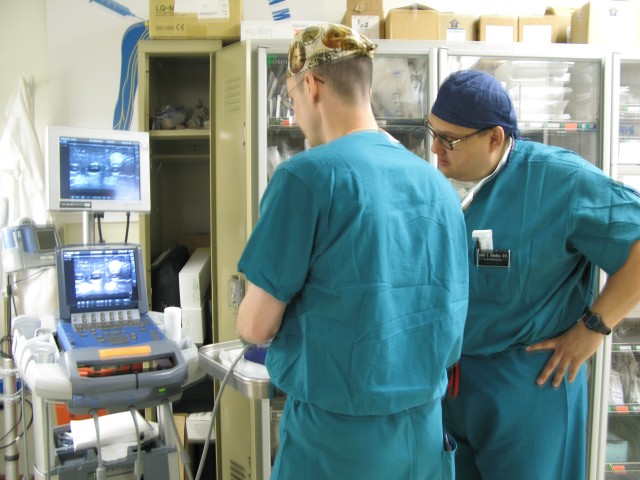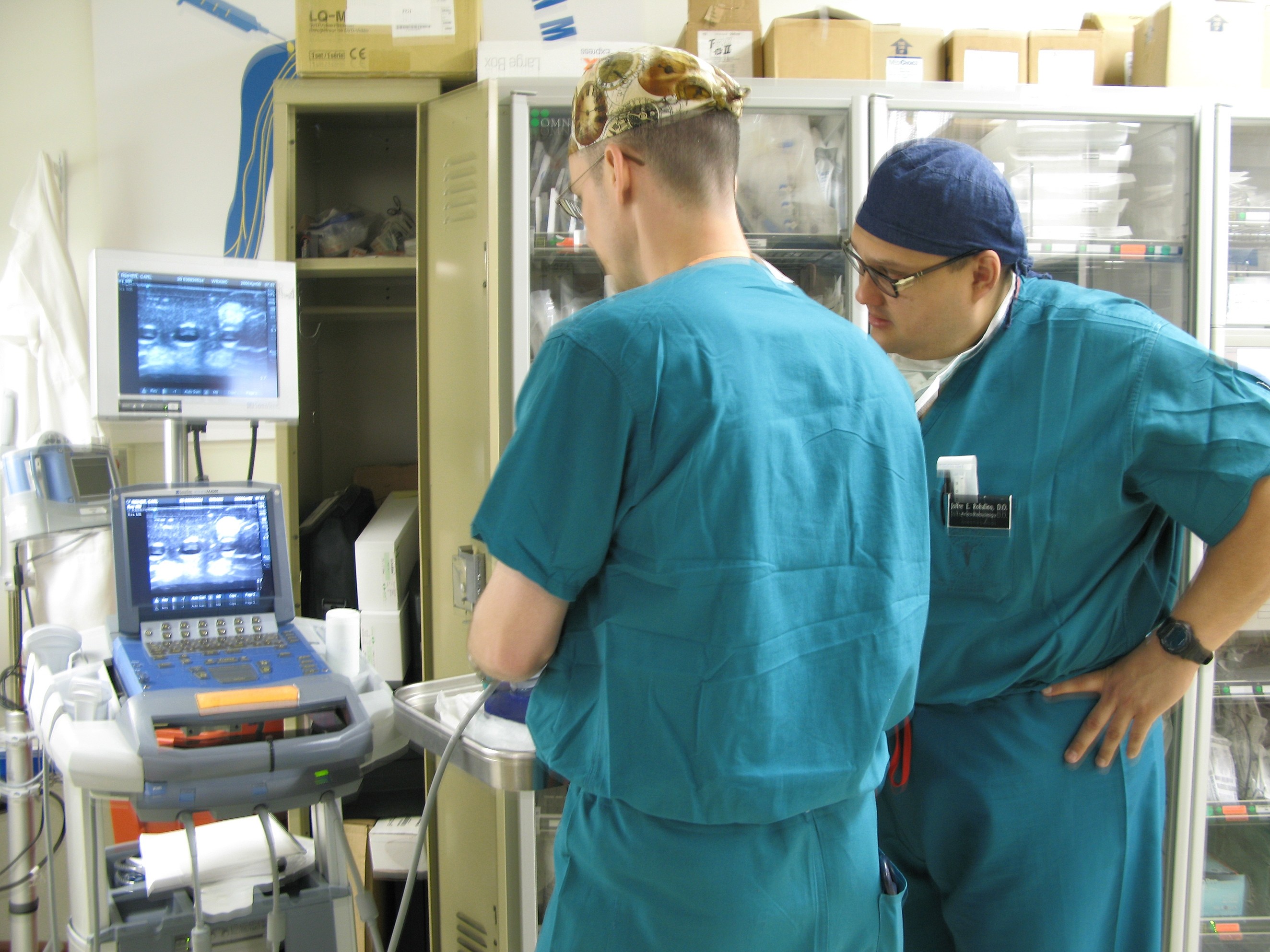"Pain is a good thing."
"It is your body letting you know you've been injured; like stubbing your toe, and it still hurting the next day. That's the vital protective sensation of pain," Col. Chester Buckenmaier, chief of Army Regional Anesthesia and Acute Pain Management Initiative, said.
With a 90-percent survival rate for servicemembers injured on the battlefield because of improved medical techniques and technologies, the Army has been spearheading a new way of looking at how it manages the excruciating pain that follows a traumatic injury.
Walter Reed Army Medical Center is one of a handful of academic institutions in the country that has an operating acute pain service and, on April 18, WRAMC will set a new standard with the opening of the Regional Anesthesia and Acute Pain Medicine Clinic.
Acute pain is felt immediately after a traumatic injury or surgery while chronic pain lasts more than six months.
The Army Regional Anesthesia and Acute Pain Management department supports one-third of operating room cases. The new area expands the treatment areas from two bays co-located within the back of the PACU, to six bays, according to Kelly Kiser, program manager for the Army Regional Anesthesia and Acute Pain Management Initiative.
The clinic will also have a dedicated physician control room that will house computer workstations, educational resources and a nurse's office. It will include a new clinical data system that will create a real-time electronic medical record, rather than the pen and paper record the physician creates. Details are important, right down to choosing a stereo system to play calm music in the clinic because pain management is "much more than just narcotics and needles," Buckenmaier said.
In medicine - particularly battlefield medicine - pain has been thought of as a symptom, a manifestation of an underlying injury or disease. Treat the disease and the pain should take care of itself. That is changing, Buckenmaier said. In order to properly manage pain, it needs to be looked at as a disease. Pain can outlive its original causes and become worse over time, creating additional health problems.
"Your body is designed to deal with the scrapes and scratches of everyday life; it's not designed to deal with your foot being blown off from an IED [improvised explosive device] on the battlefield. Now, we have a situation where this Soldier has this trauma to the body, his body doesn't know how to deal with it and is being bombarded with [signals] to the central nervous system ...When you have your foot blown off, the overload of signals gets messed up. Spinal cord signals go haywire and physical changes in the brain occur," Buckenmaier explained.
He believes this can lead to complex regional pain syndrome and phantom limb pain. Pain can also cause anything from depression to cardiovascular disease. He added that uncontrolled pain leads to immunity problems.
"Having problems with your immune system when you've had a battlefield wound is not a good thing," he said.
In the past, Soldiers who have suffered traumatic injuries would receive general anesthesia, putting the brain's processing center to sleep. But, as Buckenmaier explained, those signals are still traveling to the brain in profound ways and causing lasting effects on the brain.
In 2000, Buckenmaier and a colleague petitioned the Army to resource an underutilized method of stopping these signals and "turning the volume down" on pain, called regional anesthesia.
Regional anesthesia blocks the nerve supply to a specific part of the body, such as a limb, so patients cannot feel pain. Unlike general anesthesia, regional anesthesia (also called a nerve block) leaves the patient awake and helps speed the recovery time by managing this pain.The Regional Anesthesia and Pain Management department administers an average of eight to 10 nerve blocks a day.
"With this population, stoicism is the name of the game. You have to tell them you can't heal if your body is fighting pain," Susan Kalaine, pain management nurse, told Stripe in an October 2007 interview.
"With regional anesthesia they aren't totally snowed on narcotics and you can have a conversation with them. The catheter takes the pain away in an area without them being totally out of it," she said.
"It's almost impossible for these people to focus on anything else but their pain. When you're in pain, you get totally turned inward. In some descriptions, it is almost animal-like in your desire to escape the pain," Buckenmaier said.
Buckenmaier, the first person in DoD to receive fellowship training in this technique, has expanded the idea of regional anesthesia to the battlefield. In 2003, the first nerve block was administered on the battlefield. And in 2005, he worked on a tri-service effort to find a pump technology that could give nerve blocks on medical evacuation flights to make the injured Soldier comfortable and pain-free during the long flights to Germany and the United States.
"Walter Reed, in many aspects, has taken a leadership role, not just in the military but in medicine in general in the country," he said.With Base Realignment and Closure and integration with the National Naval Medical Center at Bethesda approaching, Buckenmaier and his team made sure most of the equipment can be moved to the new hospital in 2011.
"People want to know why we are opening a new clinic when Walter Reed will be closing. Well, it's real easy to answer. Go to Ward 54 and see the Soldiers there. We are in the middle of a war. Moving forward shows how important we see this mission."


Social Sharing